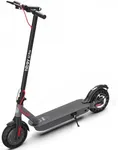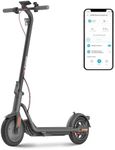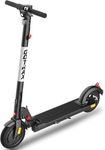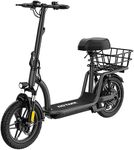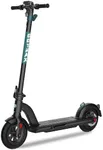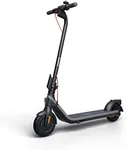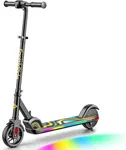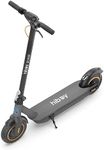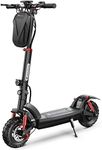Buying Guide for the Best Adult Electric Scooters
Choosing the right adult electric scooter can make your daily commute, leisure rides, or quick errands much more enjoyable and efficient. The key is to match the scooter’s features to your lifestyle and needs. Think about where and how often you’ll use it, the distances you plan to travel, and the type of terrain you’ll encounter. By understanding the main specifications, you can confidently select a scooter that fits your requirements and ensures a safe, comfortable ride.RangeRange refers to how far the scooter can travel on a single charge. This is important because it determines whether the scooter can handle your typical trips without needing a recharge. Ranges can vary from around 10 miles for basic models to over 40 miles for high-end ones. If you only need a scooter for short commutes or errands, a lower range may be sufficient. For longer rides or if you don’t want to charge frequently, look for a higher range. Always consider your daily travel distance and add a little extra to account for unexpected detours or changes in route.
Top SpeedTop speed is the maximum speed the scooter can reach. This matters for both safety and convenience. Most adult electric scooters offer speeds between 15 and 30 mph. Lower speeds are safer and may be required by local laws, making them suitable for beginners or those riding in crowded areas. Higher speeds are better for experienced riders or those traveling on open roads. Always check local regulations and think about your comfort level with speed before choosing.
Motor PowerMotor power, measured in watts, affects how quickly the scooter accelerates and how well it handles hills or rough terrain. Scooters typically range from 250W to over 1000W. Lower power is fine for flat city streets and lighter riders, while higher power is better for heavier riders, hilly areas, or those who want faster acceleration. Consider your weight, the terrain you’ll ride on, and whether you need extra power for inclines.
Weight CapacityWeight capacity tells you the maximum rider weight the scooter can safely support. This is crucial for safety and performance. Most adult scooters support between 220 and 300 pounds. If you’re close to the upper limit, choose a scooter with a higher capacity to ensure stability and avoid straining the motor. Always check this spec to match your body weight and any items you might carry.
Portability (Weight and Folding Mechanism)Portability includes both the scooter’s weight and how easily it folds. This matters if you need to carry the scooter upstairs, store it in a small space, or take it on public transport. Lighter scooters (under 30 pounds) are easier to carry but may have fewer features, while heavier ones offer more power and range but are bulkier. Look for a folding mechanism that’s simple and sturdy if you’ll be folding and unfolding often.
Tire Type and SizeTire type and size affect ride comfort and handling. Scooters come with solid or pneumatic (air-filled) tires, and sizes usually range from 8 to 12 inches. Solid tires are puncture-proof and low-maintenance but can feel bumpier. Pneumatic tires offer a smoother ride and better grip, especially on rough surfaces, but require more upkeep. Larger tires handle bumps and uneven ground better. Choose based on the surfaces you’ll ride on and your preference for comfort versus maintenance.
Braking SystemThe braking system is essential for safety. Common types include electronic, disc, drum, and foot brakes. Electronic brakes are low-maintenance but may not stop as quickly. Disc and drum brakes provide stronger, more reliable stopping power, especially at higher speeds or on hills. Foot brakes are simple but less effective for fast riding. If you’ll be riding in busy areas or at higher speeds, prioritize scooters with strong, responsive brakes.
SuspensionSuspension helps absorb shocks from bumps and rough terrain, making your ride smoother and more comfortable. Some scooters have no suspension, while others have front, rear, or dual suspension systems. If you’ll mostly ride on smooth pavement, you may not need suspension. For rougher roads or longer rides, suspension can make a big difference in comfort.
Water ResistanceWater resistance indicates how well the scooter can handle wet conditions. This is important if you might ride in the rain or through puddles. Look for scooters with an IP rating (like IP54 or higher) for better protection against water splashes. If you live in a rainy area or want to use your scooter year-round, water resistance is a key feature to consider.
